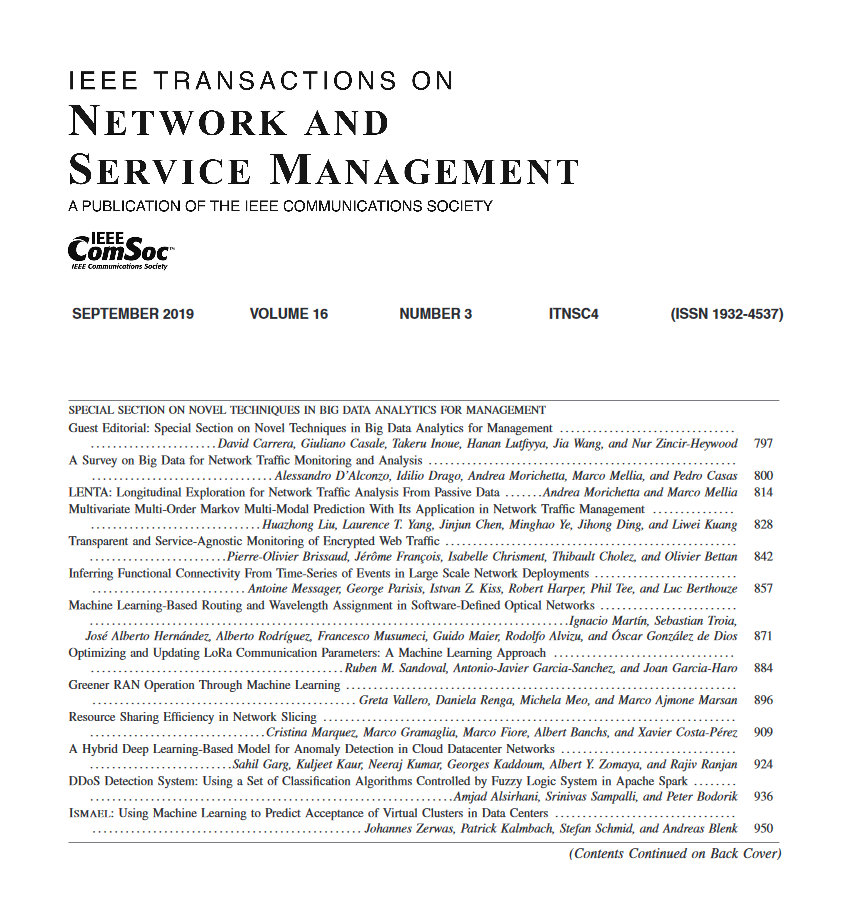Minimizing Data Collection Latency for Coexisting Time-Critical Wireless Networks With Tree Topologies
IF 5.4
2区 计算机科学
Q1 COMPUTER SCIENCE, INFORMATION SYSTEMS
IEEE Transactions on Network and Service Management
Pub Date : 2025-02-12
DOI:10.1109/TNSM.2025.3541245
引用次数: 0
Abstract
Time-Critical Wireless Network (TCWN) is a promising communication technology that can satisfy the low latency, high reliability, and deterministic requirements of mission-critical applications. Multiple TCWNs required by various applications inevitably coexist with each other. Most existing works aim to achieve acceptable latency or consider the simplest topology (i.e., line topology). As latency requirements become more stringent, exploring the minimum data collection latency becomes an interesting problem. In this paper, the coexisting system consists of multiple tree-topology-based TCWNs. We first establish a conversion framework to convert an arbitrary tree topology into multiple analogous line topologies to reduce the analysis complexity. We then propose a Time-Critical wireless network Scheduling (TCS) algorithm to minimize the data collection latency of coexisting TCWNs. The TCS algorithm consists of two phases. In the internetwork scheduling phase, we strictly derive a general expression to characterize the practical network requirements. In the intranetwork scheduling phase, we design two levels of priority assignment algorithms to accurately characterize the critical states and resource requirements of different nodes. We conduct extensive simulations to verify the effectiveness of the TCS algorithm. The evaluation results show that the TCS algorithm can achieve minimum data collection latency in more than 99.956% cases, and the maximum difference compared to the optimal value is one time slot.树形拓扑共存时间关键型无线网络的数据采集延迟最小化
时间关键型无线网络(TCWN)是一种很有前途的通信技术,可以满足关键任务应用的低延迟、高可靠性和确定性要求。各种应用需要的多个tcwn不可避免地共存。大多数现有工作的目标是实现可接受的延迟或考虑最简单的拓扑(即线拓扑)。随着延迟要求变得越来越严格,探索最小数据收集延迟成为一个有趣的问题。在本文中,共存系统由多个基于树拓扑的twns组成。我们首先建立了一个转换框架,将任意树拓扑转换为多个类似的线拓扑,以降低分析的复杂性。然后,我们提出了一种时间关键型无线网络调度(TCS)算法,以最小化共存TCWNs的数据收集延迟。TCS算法分为两个阶段。在网络调度阶段,我们严格推导出描述实际网络需求的一般表达式。在网络调度阶段,我们设计了两级优先级分配算法,以准确表征不同节点的关键状态和资源需求。我们进行了大量的仿真来验证TCS算法的有效性。评估结果表明,在99.956%以上的情况下,TCS算法可以实现最小的数据采集延迟,与最优值的最大差异为一个时隙。
本文章由计算机程序翻译,如有差异,请以英文原文为准。
求助全文
约1分钟内获得全文
求助全文
来源期刊

IEEE Transactions on Network and Service Management
Computer Science-Computer Networks and Communications
CiteScore
9.30
自引率
15.10%
发文量
325
期刊介绍:
IEEE Transactions on Network and Service Management will publish (online only) peerreviewed archival quality papers that advance the state-of-the-art and practical applications of network and service management. Theoretical research contributions (presenting new concepts and techniques) and applied contributions (reporting on experiences and experiments with actual systems) will be encouraged. These transactions will focus on the key technical issues related to: Management Models, Architectures and Frameworks; Service Provisioning, Reliability and Quality Assurance; Management Functions; Enabling Technologies; Information and Communication Models; Policies; Applications and Case Studies; Emerging Technologies and Standards.
 求助内容:
求助内容: 应助结果提醒方式:
应助结果提醒方式:


